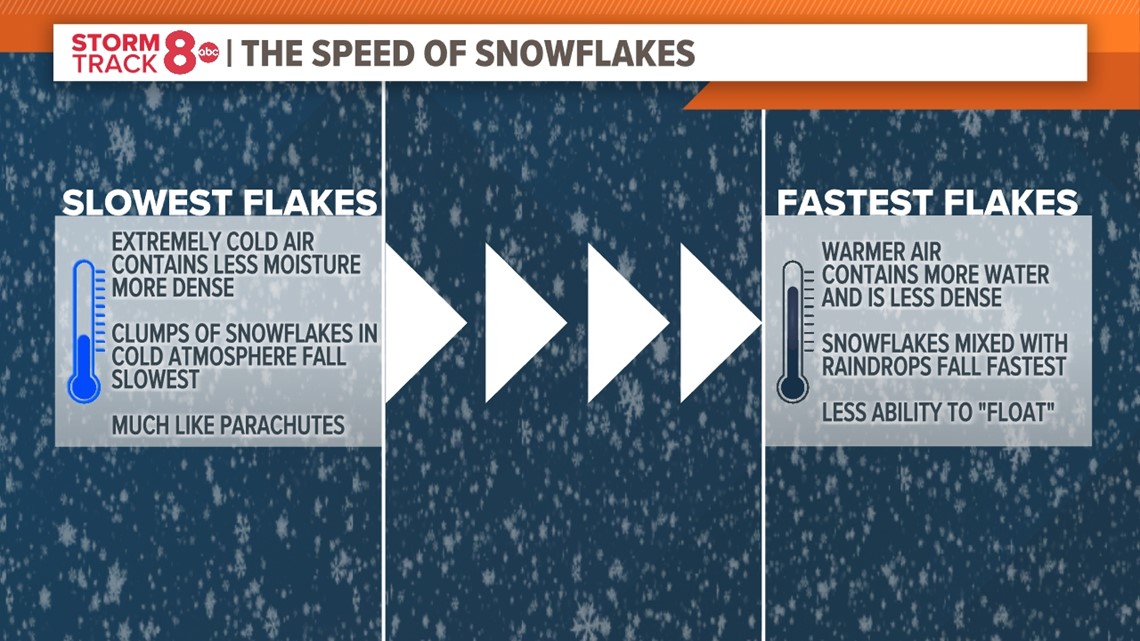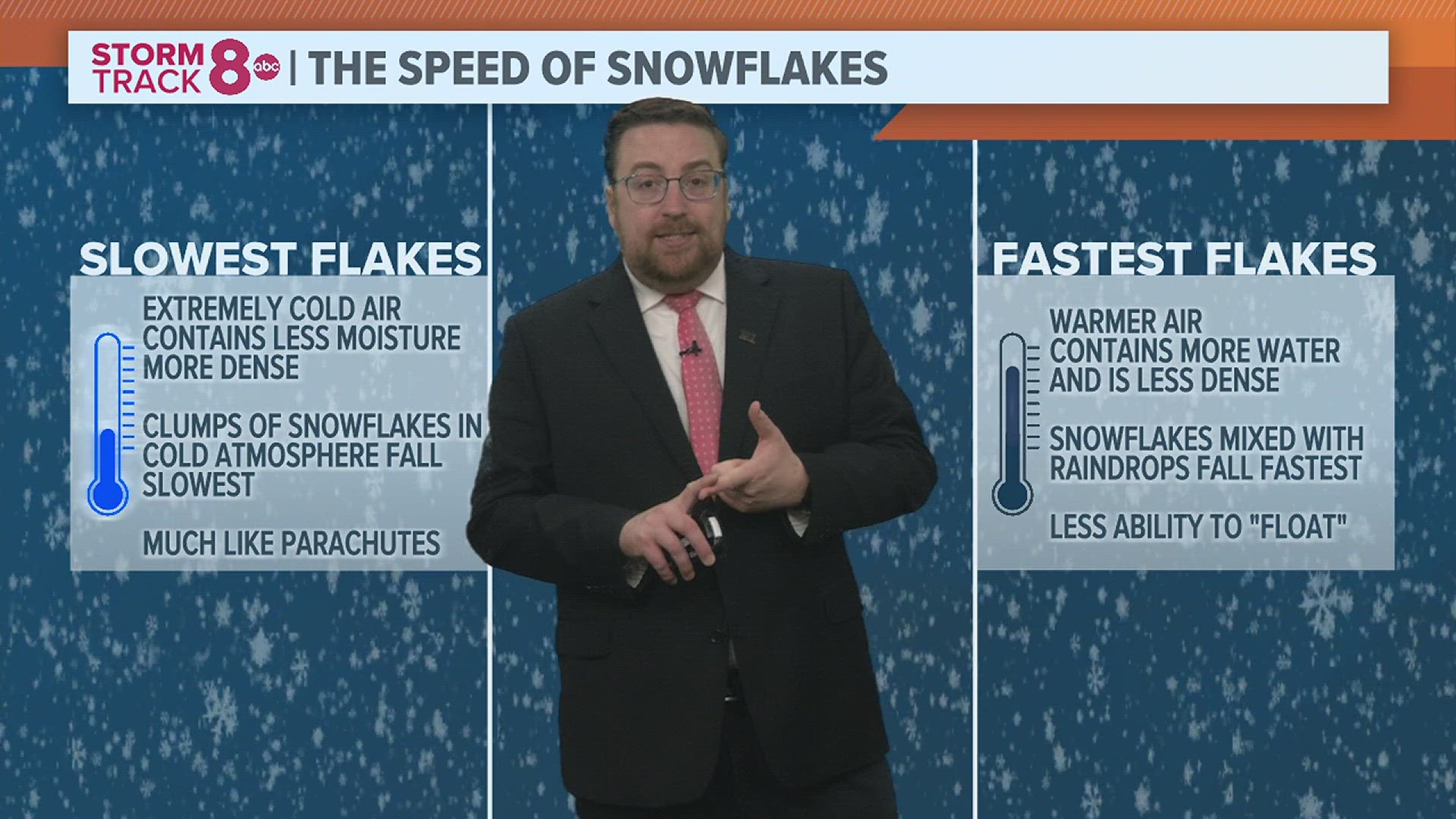MOLINE, Illinois — Snowfall is now a distant memory as the Quad Cities heads into the middle of February thanks to a recent pattern flip which has brought warmer temperatures back to the region. This is another sure sign of El Nino maintaining control over our winter season. While we may not be thinking about snow, Dawn from Muscatine, Iowa, is! She asks, "Why do some snows fall faster than others?" Let's dig in!
Size, shape, and weight
Even though it may be hard to see without using a magnifying glass, snowflakes come in various shapes and sizes. From hexagonal plates to stellar dendrites and even needles! Plates and dendrites tend to be larger and have more surface area while needles and bullet-shaped flakes are much more narrow in size. The snowflake itself isn't the only determining factor in what speed said snow falls. So is the air around it!


We've talked about the differences in air density and temperature. Cold air is more dense than warm air, simply because cold air can't hold nearly as many water molecules as warm air can. That cold, dense, air also acts to slow the fall of certain snowflakes, making it seem as if they have micro-sized parachutes attached to them.
Many of our initial snows across the Quad Cities area fell through very warm air, and the rate at which those flakes fell was quite quick. With that warmer air, snowflakes, even big ones, have a little less resistance when falling.
That warmer air is also more likely to contain tiny water droplets in which the snowflakes collide upon falling, making them even heavier and further reducing their air resistance as a thin layer of ice, known as rime, accumulates on them.
Discounting the wind
Now, the wind can certainly also play a factor in the rate at which a snowflake falls, so the above scenarios assume little to no wind in play.
Have a question that you would like me to answer for an upcoming Ask Andrew segment? Submit it, here!
Watch more news, weather and sports on our YouTube channel

